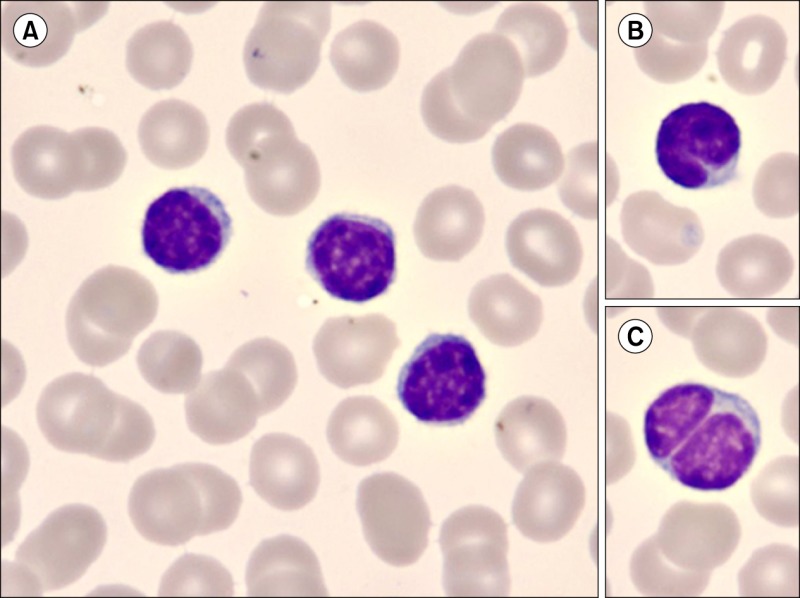
A 60-year-old man was admitted for evaluation of leukocytosis found on a regular checkup. Physical examination revealed palpable neck lymph nodes. Peripheral blood (PB) findings were as follows: hemoglobin level, 16.6 g/dL; platelet count, 245×109/L; and leukocyte count, 41.6×109/L (11% neutrophils, 86% lymphocytes, and 3% monocytes). Most lymphocytes were small to medium-sized with scant but visible cytoplasm, and non-lobulated nuclei (A). A few cells with indented or cleft nuclei were observed (B, C). The bone marrow (BM) was hypercellular with diffuse infiltration of small to medium-sized lymphoid cells. On immunophenotyping, 42% and 56% of all nucleated PB and BM cells, respectively, showed CD5-, CD10+, CD19+, CD20+, CD23weak+, and FMC7+, with lambda light chain restriction. Chronic lymphocytic leukemia (CLL) was ruled out considering the phenotypic features. Cytogenetic analysis of the BM aspirate revealed t(14;18)(q32;q21). Computed tomography revealed multiple lymphadenopathy. Cervical lymph node biopsy findings indicated a diagnosis of grade 1-2 follicular lymphoma. Circulating cells of follicular lymphoma in leukemic phase usually show a predominance of the characteristic "cleaved" feature, but may resemble the features of other lymphoproliferative disorders including CLL on rare occasions. Immunophenotypic analysis is useful for a proper differential diagnosis in such cases.




 PDF
PDF ePub
ePub Citation
Citation Print
Print


 XML Download
XML Download